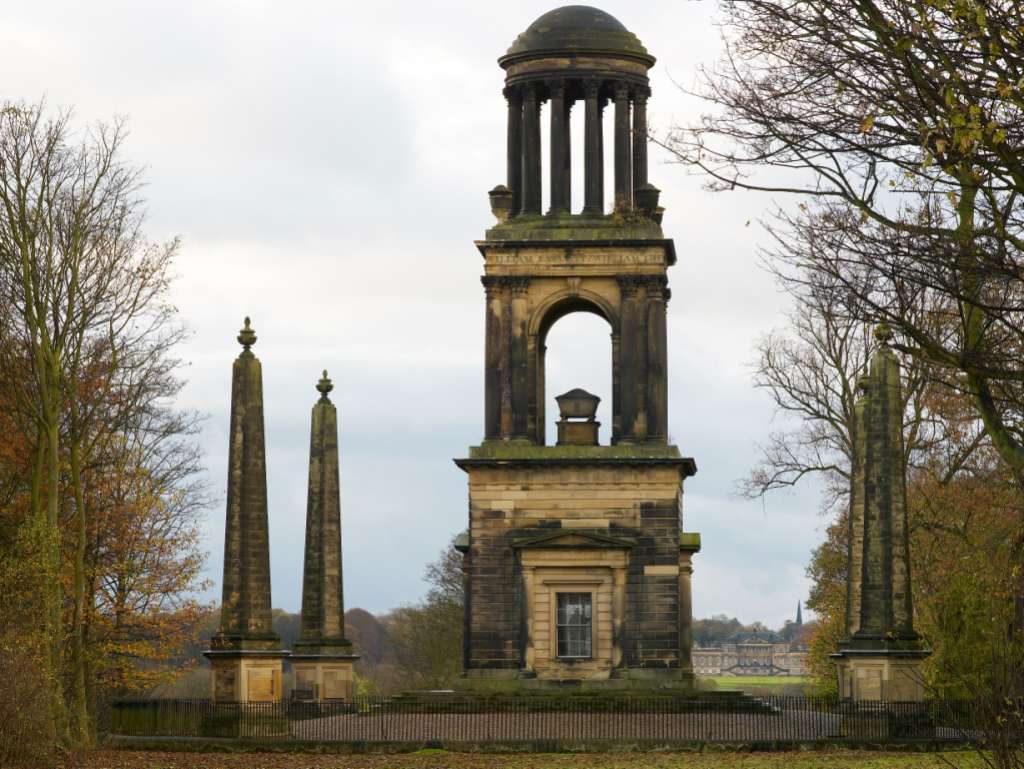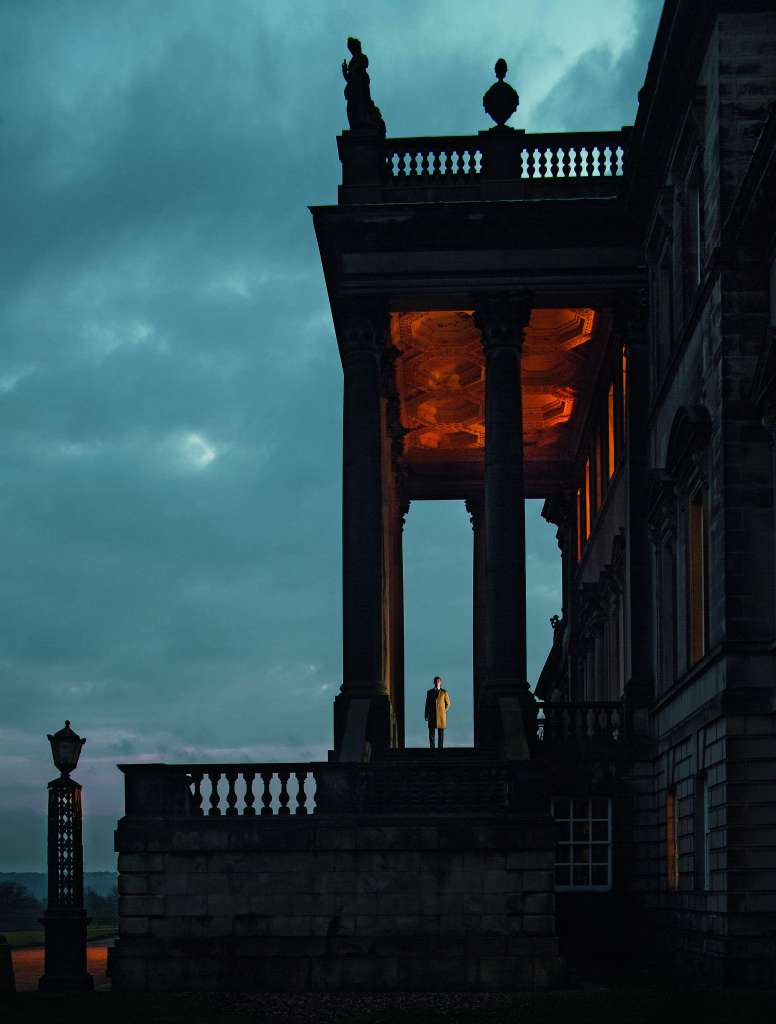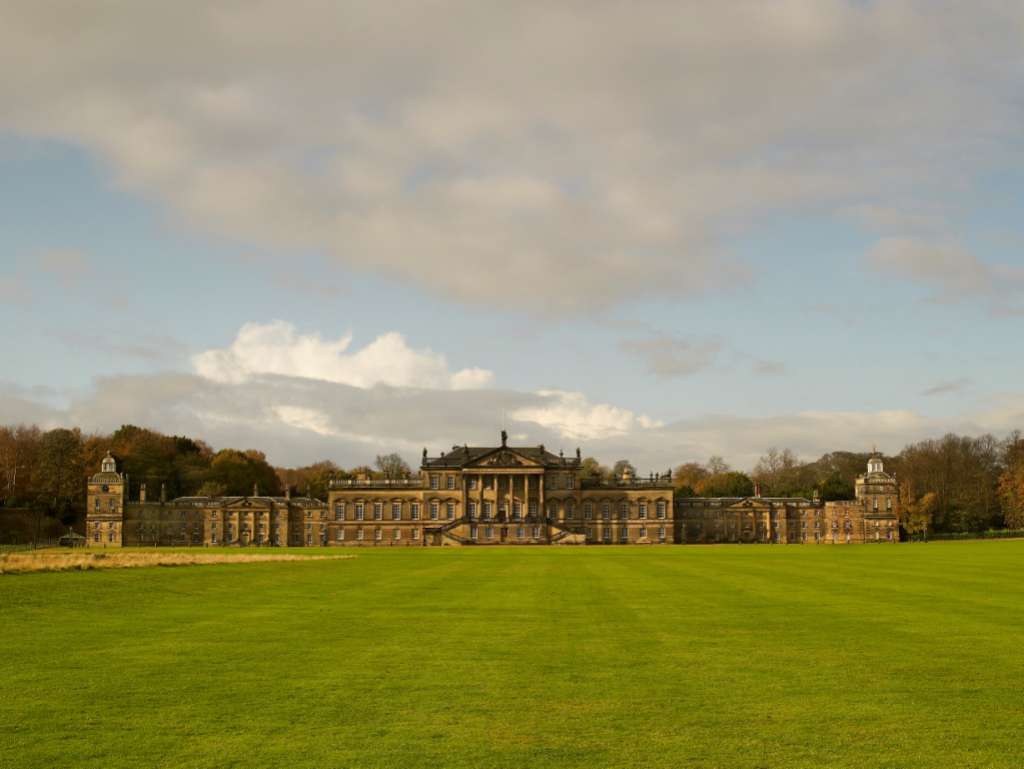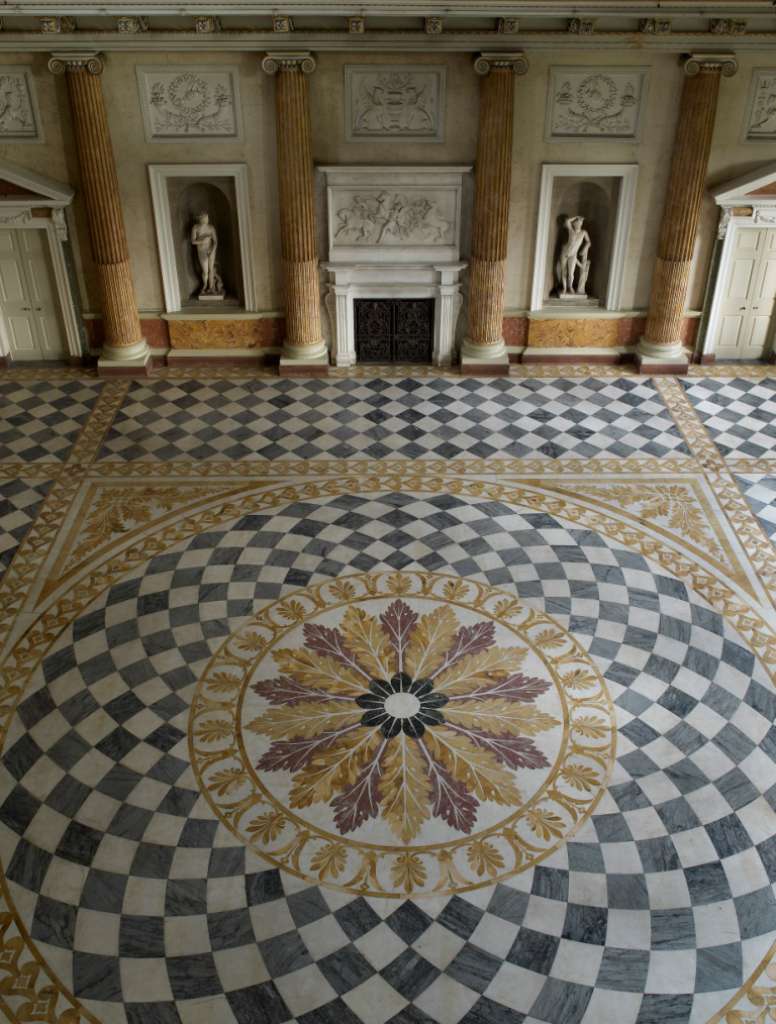Grandest stately home saved for the Nation - Wentworth Woodhouse sale completes
27 March 2017
Grandest stately home saved for the Nation - Wentworth Woodhouse sale completes
After 70 years of uncertainty the future of one of England’s grandest country houses is now secure. This follows the £7m sale of Wentworth Woodhouse in South Yorkshire to the specially formed Wentworth Woodhouse Preservation Trust, initiated by SAVE, on 24th March 2017.
Sir Simon Jenkins, a trustee of SAVE, says: “In 40 years this is SAVE’s greatest triumph, a great moment for SAVE and Yorkshire too”.
Despite the best efforts of two public sector owners and two private owners, this vast house has ultimately proved too expensive for either the public or the private sector to maintain. In 2012, working with entrepreneurs Kit Martin and Roger Tempest, SAVE therefore devised a third way, which involves a variety of compatible uses generating income to keep the listed buildings in repair, with the mansion placed in a charitable trust to maximize fundraising potential.
The SAVE scheme rests on four pillars. The magnificent interiors – complete with Roman and 18th century sculptures which have stood in the marble hall and grand staircase since the 18th century - will be opened to the public with help from the National Trust, which has promised £750,000 over the first three years of opening. The north wing, already converted as a student refectory with catering kitchen, will be used for events; the stable courtyard will provide attractive accommodation for small businesses; and some 15-18 houses and flats will be created, suitable as holiday lets or short leases.
The £7m funds for purchase have come from the National Heritage Memorial Fund, The Monument Trust, Art Fund, The JP Getty Jnr Charitable Trust, and Sir Siegmund Warburg’s Voluntary Settlement. Major support has also come from the National Trust which funded the all-important business plan.
In addition, the Chancellor of the Exchequer in his Autumn Statement announced a grant of £7.6m towards urgent repairs to the fabric of the house. In all, some £42 million of carefully costed repairs will be needed over the next 15 to 20 years, but this is not an exceptional sum for so large a building that compares in size and quality with a major cathedral.
Marcus Binney, Executive President of SAVE, says: "This is a triumph against all the odds. It is a deal which the lawyers advised was so complicated it could never normally be done. It has taken five years of sustained hard work to secure support, but we have learnt over 40 years that however hopeless or impossible the battle for a great historic building may seem we should never give up. Huge thanks are due to Julie Kenny, chair of Wentworth Woodhouse Preservation Trust, and her trustees who against precipitous deadlines have secured all the complex agreements needed to complete purchase.
“We also thank the Newbold family for their help, cooperation and patience while the rescue plan has been drawn up and the necessary funding secured. Clifford Newbold was the first to open this great house to visitors giving huge pleasure and excitement to everyone who came."
Earlier the house was acquired in 1989 by Mr Wensley Haydon-Baillie who provided a £10m endowment and carried out repairs.
Henrietta Billings, Director of SAVE says: "We are delighted that the sale of Wentworth Woodhouse is now complete – and that the next chapter of this magnificent house as a unique visitor attraction and cultural and employment hub can begin."
Wentworth Woodhouse
It has often been said that Wentworth Woodhouse has the longest front of any stately home in Britain but this intriguingly is a title contested by both Stowe House in Buckinghamshire and Hopetoun House in Scotland, both of which are claimed to be a few feet longer.
Wentworth Woodhouse’s real claim to glory is as a superb example of two of the greatest architectural styles Britain produced – the baroque of Vanbrugh and Hawksmoor and the Palladianism pioneered by the architect Earl of Burlington.
Strangely for so great and famous a house the architects have never been firmly identified, though the richly detailed Baroque West front has echoes of Vanbrugh’s Castle Howard while the long east front is attributed to Lord Burlington’s protegee Henry Flitcroft.
The six column Corinthian portico is one of the most beautiful in English architecture, surpassing even those of the National Gallery and St Martin’s-in-the-Fields in London’s Trafalgar Square.
Writing in Country Life the architectural historian Richard Hewlings said, 'It is probably the largest private house in the world. It has 25 rooms of the highest quality. Buckingham Palace and Windsor Castle each have about 20 of the same standard, Blenheim perhaps eight, Castle Howard three or four.'
The house’s size and splendour is born of one of the greatest rivalries in English architecture. The estate had belonged to Charles I’s chief minister the Earl of Strafford, who was condemned to death by Parliament in 1641.
When his heir died without children the title went to Lord Raby, a courageous soldier who was appointed envoy to the Prussian Court in 1703, while the vast estates were inherited by a distant cousin, Thomas Watson-Wentworth. Lord Raby was so incensed at losing what he saw as his rightful inheritance he bought a neighbouring estate and embarked building a vast house - Wentworth Castle - intended to overwhelm his kinsman who was a mere squire.
Lord Raby used a German architect Johann von Bodt, and in the words of a local historian, 'began to make such additions as would vie in splendour with Wentworth Woodhouse the seat of his ancestors and now of his obnoxious relative, Mr Watson-Wentworth, only some five miles distant'.
The Watson-Wentworths were rich enough to respond in kind, building a house grand and large enough to be called a palace. Their wealth and political influence brought them a succession of titles - Viscount Higham, Earl of Malton and Marquess of Rockingham.
The house was built for political entertaining reflecting the enormous importance of Yorkshire in the 18th century House of Commons. The second Marquess was twice Prime Minister and helped end the war with the American Colonies.
The scale of entertaining is evident from a 1731 description by Lord Malton some time before the house was complete: ‘I gave a large entertainment to all my tenants & their wives & some neighbouring gentlemen…the number of guests was about one thousand… For preventing confusion, all had tickets sent to them with the name of the Rooms they were to repair to.’
Visitors to the house enter through the many-pillared lower hall and visit the chapel and the Painted Drawing Room on the ground floor ascending a half moon stair with twin flights. This leads to the Marble Saloon, 60 feet square and 40 feet high and one of the grandest 18th century rooms in England. On one side are the Statuary Room and Libraries; on the other the Anteroom or Supping Room, the Van Dyck Room (or State Drawing Room) and the Whistlejacket Room, named after Stubbs’s most famous horse painting, now in the National Gallery in London.
Sir Nikolaus Pevsner, the famous chronicler of Britain’s historic buildings wrote in 1959: ‘The interiors of Wentworth Woodhouse are of a quite exceptional value. They represent, with few exceptions, the style of no more than one generation, but they represent it in a variety of shades, from the Viennese or Venetian gaiety of the West Entrance Hall, to the Palladian purity of the Grand Saloon. A suite like that along the East front from the Whistlejacket Room to the Library is not easily matched anywhere in England.'
After World War II Wentworth Woodhouse was offered by the 8th Earl Fitzwilliam to the National Trust but was too large and expensive for the Trust to take on. Surrounded by open-cast coal mining the house was saved from demolition as a PT teacher training college sponsored by a member of the Fitzwilliam family Lady Mabel.
Though Wentworth Woodhouse comes with just 83 acres its setting is unusually well-protected. The parkland, including the deer park and lakes, were replanted after open cast coalmining and are cared for by the Fitzwilliam Wentworth Amenity Trust.
This trust has restored the temples and follies which number some of the finest and most eccentric landmarks to be found in the grounds of any English stately home. They include a triangular pyramid known as Hoober’s Stand; the Needle’s Eye – said to have been built to win a wager that the noble owner could drive a coach and horses through the Biblical needle’s eye; and the Rockingham Mausoleum, an almost perfect reconstruction of one of the finest Roman funerary monuments surviving from Antiquity near Nimes in southern France. It contains busts of Rockingham’s political allies including the philosopher-statesman Edmund Burke, Rockingham’s political secretary, who is widely held to be one of the greatest Parliamentarians of all time.
For more information about SAVE's role in campaigning for Wentworth Woodhouse please contact Mike Fox on 0207 253 3500 or mike.fox@savebritainsheritage.org
For information about visiting Wentworth, tendering for work, volunteering and job opportunities, pleae contact the Wentworth Woodhouse Preservation Trust - info@wentworthwoodhouse.org.uk
Notes to Editors:
Marcus Binney first visited Wentworth Woodhouse in 1984 with Kit Martin, to consider proposals for the future use of the house. Kit Martin devised a proposal with Martin Stancliffe architects but this was never implemented, and the house was later sold in 1989.
SAVE has been ardently working on the current proposals since 2012, devising and developing the business plan, making grant applications, and establishing the Wentworth Woodhouse Preservation Trust in 2014.
During this time help and support has come from many sources, including the Pilgrim Trust, whose initial grant helped set the project in motion, architect Eva Palacios, Kit Martin, Roger Tempest, conservation architect Chris Cotton, quantity surveyor Ian Tomlinson, and the National Trust.
Members of the public have generously donated and pledged sums of support. SAVE's work relies on donations. To donate and support SAVE's work please visit: https://www.justgiving.com/savebritainsheritage
The trustees of the Wentworth Woodhouse Preservation Trust are: The Duke of Devonshire, Lady Juliet Tadgell, Sir Philip Naylor-Leyland, Julie Kenny (Chair), Timothy Cooke, Martin Drury, and Merlin Waterson.
The NHMF has been the greatest saviour of endangered ancestral homes in recent history. SAVE campaigns have led to the acquisition of Calke Abbey in Derbyshire and Tyntesfield in Somerset by the National Trust, of Fyvie Castle by the National Trust for Scotland and Dumfries House In Scotland by the Prince of Wales – all with substantial grants from the NHMF.
SAVE Britain’s Heritage has been campaigning for historic buildings since its formation in 1975 by a group of architectural historians, writers, journalists and planners. It is a strong, independent voice in conservation, free to respond rapidly to emergencies and to speak out for the historic built environment.






